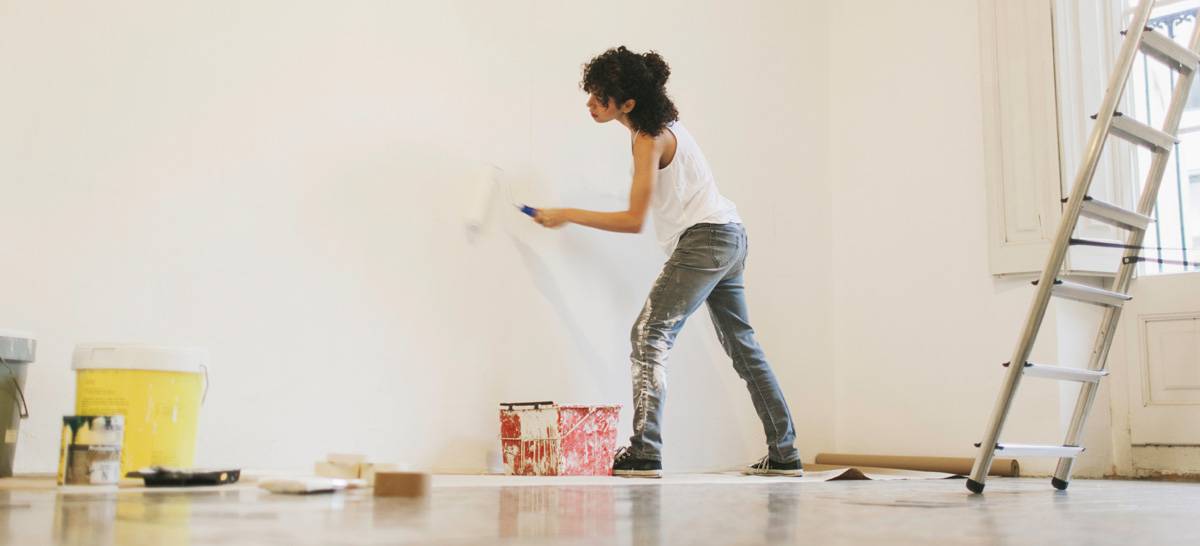One coat painting has had its fair share of critics and lovers. Find out which method is right for your needs.
While many painters shun using just a primer for its flat or dull finish, inability to remove stains, non-resistance to abrasion, and fast deterioration, one coat painting is actually gaining a great deal of followers in providing professional-looking results.

Virtually every paint company has recently introduced its own version of 2-in-1 paint and primer product. While it seems less bothersome and more convenient to skip the obligatory priming step before painting, one coat painting can only be recommended if you consider factors such as the color selection, the age of the house, and the expected length the paint color should last.
What you first need to know about primers
Primers are not always the ONLY solution to every painting project. First, you need to understand the different types of primers and its specific purpose to be able to finally decide whether you actually need one.
 1. Drywall Primer
1. Drywall Primer
A high quality primer is essential when painting a new/bare drywall. It soaks up paint like a sponge and you want to achieve a consistent appearance like with its surrounding areas.
2. Wood Primer
As one of the most difficult substrates for one coat paint application to be successful with, bare wood only adheres to a good slow-drying oil-based primer. But you don’t want to wait 24 hours before you can apply topcoat on it. Fortunately, there are now oil and latex-based products that dry quickly, thanks to new faster-drying technology these days.
3. Masonry Primer
Adhesion problems always arise when painting masonry surfaces – its high pH level is the culprit. Another issue with masonry surfaces is efflorescence – formation of white crystalline deposits. A quality masonry primer product is a must if you don’t want to risk adhesion loss.
 4. Stain-Blocking Primer
4. Stain-Blocking Primer
If you don’t want water stains or smoke damage to bleed through the topcoat, a stain-blocking primer is required. This type of primer is also advisable when there are crayon or grease marks to cover as well as when painting a lighter color over a darker one.
5. Bonding Primer
Even the most expensive one coat paint product will have a challenging time covering up ‘slick’ surfaces such as ceramic tile, glazed block and surfaces with a high gloss finish. A bonding primer is ideal for great adhesion of the finish coat to the surface.
To save you time scouring through contradicting online comments and reviews, here are some pros and cons of one coat painting.
When Paint and Primer In One Can Do The Trick
- When you are painting over a surface that is already painted, an all-in-one paint and primer product works best.
- If you have used the same type, shade and finish of paint on an already painted wall, you can get away with just using a high quality multipurpose primer.
- A one coat painting can also provide effective coverage over a variety of shades of an existing paint.
- Choosing high quality and thicker all-in-one paint and primer products can also effectively cover a surface with just one coat.
When You’re Better Off Using A Traditional Primer And Paint
 If you want better adherence to the wall, a primer is essential to work hand-in-hand with the topcoat of paint.
If you want better adherence to the wall, a primer is essential to work hand-in-hand with the topcoat of paint.- One coat painting is not advisable when covering oil-based paint with latex or when changing the sheen to flat from a slick semi-gloss.
- A surface that has never been painted before will not get the best results when painted by a multipurpose primer only.
- Skip the 2-in-I products when working on new wood, new drywall or any new surface.
- A traditional primer and paint is best for covering up chalking and chipped paint.













Write a Comment